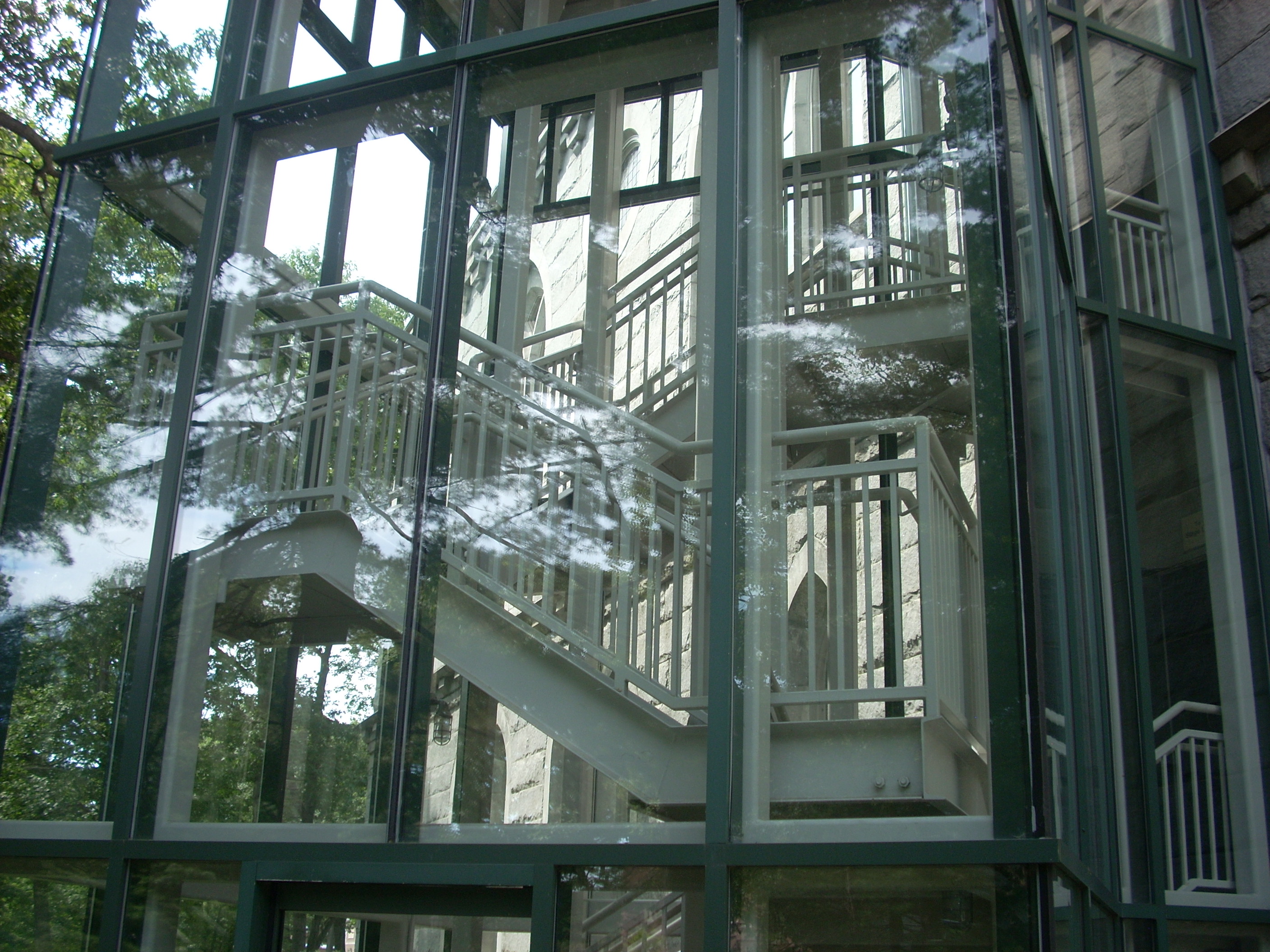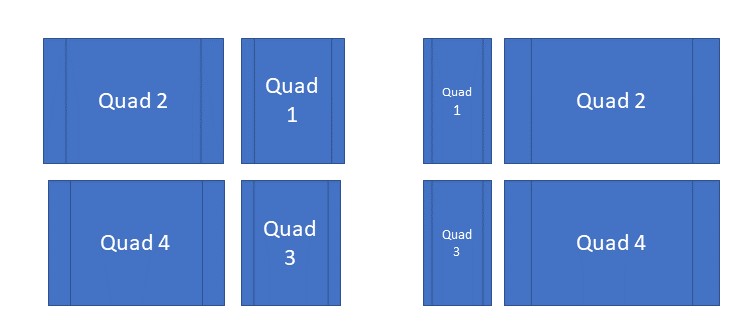
At this point, I will offer two other versions regarding Kevin and Sheila’s second quadrants, using the alternative structures of the original Johari Window that I introduced in an earlier essay (Quad One).
Disjointed Interaction Model
If we don’t assume Luft’s tight interdependency among the four window panes, then Sheila’s and Kevin’s windows might look like this:
SHEILA KEVIN
Sheila and Kevin’s larger Quad Two would impact on all three of the other quadrants (Quads One, Three and Four). Most importantly, this condition would reduce the size of their public selves (Quad One) with specific reference to one another. If we introduce the notion of psychic tension within Sheila and Kevin, then the Disjointed Interaction model would suggest that both Sheila and Kevin are likely to feel less comfortable in their relationship with one another. Eventually they will feel compelled to provide each other with more feedback regarding their perceptions (Quad Two).









